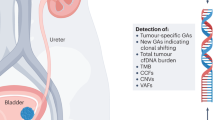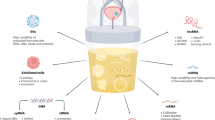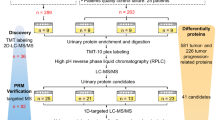Abstract
A total of 190 patients being treated or followed up for urothelial carcinoma have been studied by the serial estimation of their urinary and plasma CEA levels. Only 46% of patients with a urothelial neoplasm present have a raised urinary CEA level. Infection or ileal conduit urine vitiate the result as they produce high CEA levels in the urine in the absence of any neoplastic disease. The accuracy of urinary CEA estimations is compared with that of cytology. Plasma CEA levels do not serve as a useful guide to the presence of extra-urinary tract tumour spread if taken as isolated readings. However, serial plasma CEA estimations may indicate that metastatic disease is present several months before its detection by the more usual clinical methods in a minority of patients.
This is a preview of subscription content, access via your institution
Access options
Subscribe to this journal
Receive 24 print issues and online access
$259.00 per year
only $10.79 per issue
Buy this article
- Purchase on Springer Link
- Instant access to full article PDF
Prices may be subject to local taxes which are calculated during checkout
Similar content being viewed by others
Rights and permissions
About this article
Cite this article
Coombes, G., Hall, R., Laurence, J. et al. Urinary carcinoembryonic antigen (CEA)-like molecules and urothelial malignancy: a clinical appraisal. Br J Cancer 31, 135–142 (1975). https://doi.org/10.1038/bjc.1975.18
Issue Date:
DOI: https://doi.org/10.1038/bjc.1975.18
This article is cited by
-
Urine carcinoembryonic antigen levels are more useful than serum levels for early detection of Bilharzial and non-Bilharzial urinary bladder carcinoma: Observations of 43 Egyptian cases
World Journal of Surgical Oncology (2007)
-
Tissue antigens in normal and pathologic urine samples: A review
Kidney International (1979)
-
Immunoperoxidase staining of carcinoembryonic antigen in urinary bladder cancer
Urological Research (1978)
-
Isolation of CEA-like material from urinary bladder carcinoma
Urological Research (1978)
-
Carcinoembryonic antigen in serum, urine and cells of patients with bladder carcinoma
Urological Research (1978)



